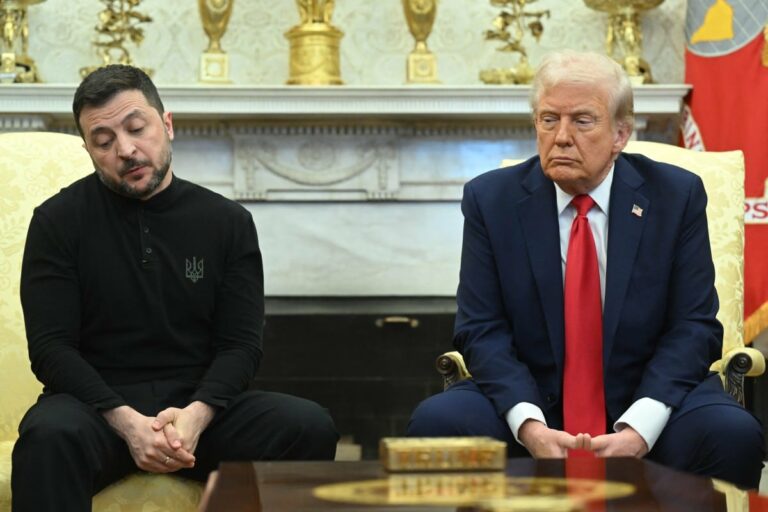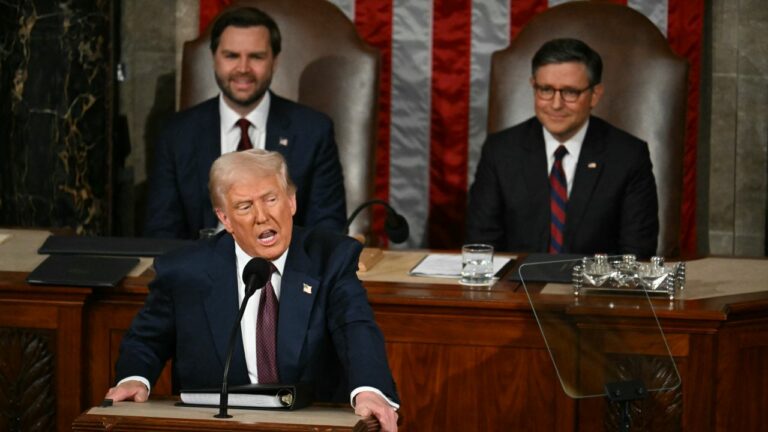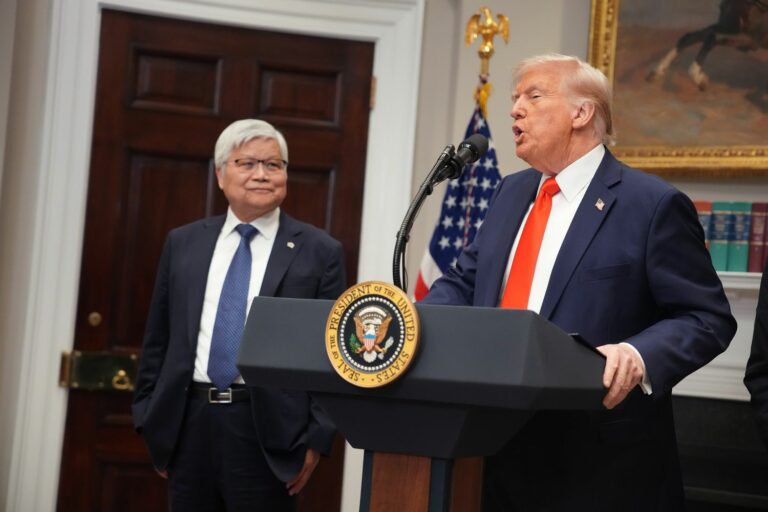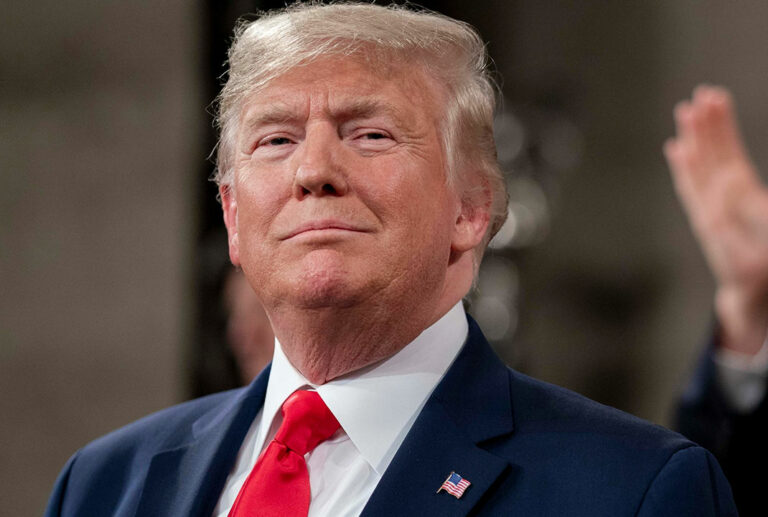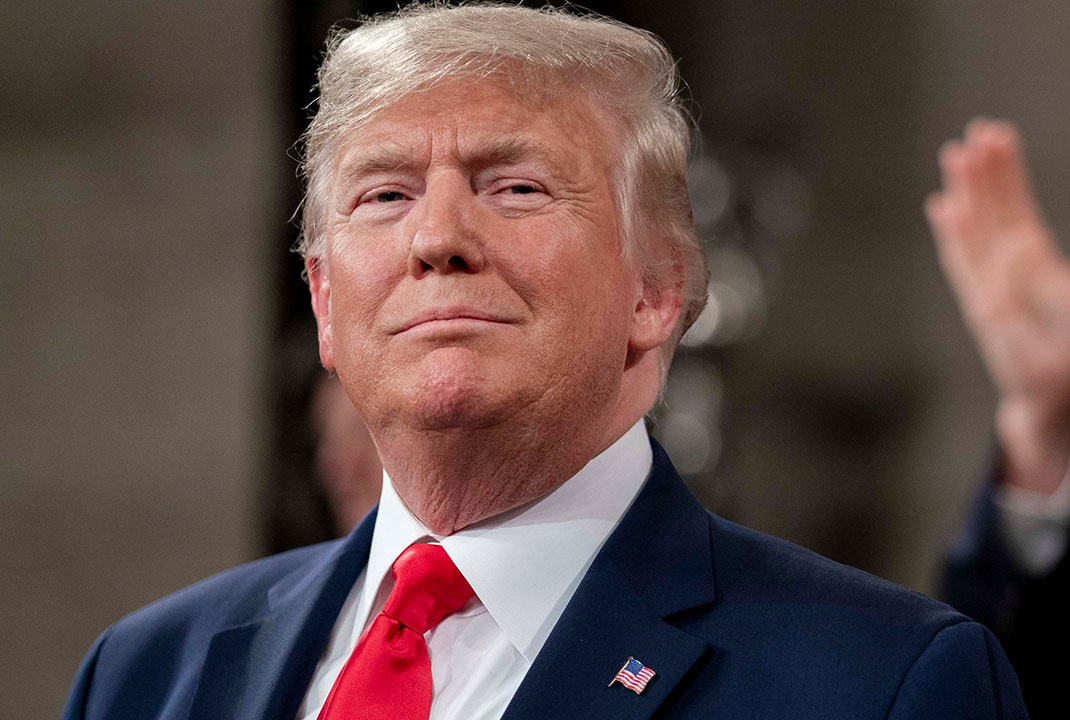
In a bold declaration, President Donald Trump stated, “America is back” during his recent address to Congress. This proclamation marks a significant moment in the trajectory of U.S. politics, international relations, and economic policy. As we delve into this pivotal narrative, it’s important to recognize that Trump’s message signifies more than just a return to policy norms; it encapsulates a vision for America’s role on the global stage, especially amidst ongoing geopolitical crises like the war in Ukraine.
The Quest for Peace in Ukraine
As tensions continue to escalate in Ukraine due to the ongoing conflict with Russia, President Donald Trump has emphasized the necessity of diplomatic negotiations over military actions. His administration’s focus on resuming peace talks reflects a broader strategy to stabilize not only Ukraine but also U.S.-Russia relations.
Understanding the Conflict
The roots of the current conflict in Ukraine can be traced back to historical grievances, territorial disputes, and political divisions.
- Historical Grievances: For many Ukrainians, the annexation of Crimea by Russia in 2014 serves as a painful reminder of imperial ambitions. Russia’s involvement in Eastern Ukraine further complicates matters, creating a backdrop of mistrust that has fueled both nationalistic sentiments and foreign interventions.
- Territorial Disputes: The question of territory is central to the peace discussions. Ukraine’s sovereignty must be respected while ensuring that Russian interests are taken into account without compromising Ukrainian autonomy.
- Political Divisions: Domestically, Ukraine is a nation divided between pro-European and pro-Russian factions. This split complicates any peace negotiations, as various political actors have different visions for the country’s future.
As President Trump referenced in his remarks, the need for dialogue is paramount. The stakes are high, not just for Ukraine, but for global stability, as other nations watch closely how this situation unfolds.
The Role of Diplomacy
Diplomatic engagement has often been overlooked in favor of aggressive posturing in international relations. Trump’s assertion that Ukraine is ready to return to negotiations indicates a willingness to engage, which could lead to improved relations.
- Bilateral Talks with Russia: Engaging Russia in a meaningful dialogue could pave the way for a cease-fire and eventual peace agreement. Effective diplomacy requires an understanding of mutual interests and concessions.
- U.S. Support and Security Guarantees: Any potential agreement may hinge on assurances from the United States regarding Ukraine’s security. History shows that agreements made without substantial backing often fall apart.
- International Involvement: Key allies such as NATO members must be involved in negotiations to ensure a balanced approach is maintained. Their input could bring additional pressure on Russia to comply with a peaceful resolution.
Through these avenues, President Trump aims to foster a stable environment, one where conflicts can be resolved through dialogue rather than battlefields.
Challenges Ahead
Despite the optimistic outlook, significant challenges remain in realizing peace in Ukraine.
- Distrust Between Nations: Long-standing distrust can impede negotiations. Both sides must be willing to address past grievances and build trust through tangible actions.
- Domestic Pressures: Political opposition within Ukraine may resist compromises that they perceive as detrimental to national sovereignty. Balancing internal politics with external pressures will be critical for any leader.
- Geopolitical Dynamics: The wider geopolitical landscape cannot be ignored, as rivalries among global powers influence local conflicts. A careful navigation of these dynamics is essential to secure a lasting peace.
President Trump’s administration appears prepared to tackle these challenges head-on, striving for a diplomatic solution that could reshape not only Ukraine’s future but also how the world perceives American leadership.
Economic Policies Under Trump’s Administration
Alongside his foreign policy initiatives, President Donald Trump has set ambitious economic goals, claiming that “the American dream is surging.” His focus on domestic production, tariffs, and energy independence illustrates an overarching strategy aimed at revitalizing the U.S. economy.
Revitalizing Manufacturing
In his address, Trump highlighted the importance of reviving American manufacturing, an initiative that resonates deeply with many working-class Americans.
- Tariff Implementation: The decision to impose tariffs on imports from countries such as Canada, Mexico, and China has been controversial yet strategic. By imposing these tariffs, Trump aims to protect American industries and jobs, asserting that reciprocal tariffs will level the playing field for American manufacturers.
- Job Creation: The resurgence of manufacturing is tied directly to job creation. Trump’s policies aim to bring jobs back to the U.S. by incentivizing businesses to produce goods domestically. This promise appeals to those who feel left behind by globalization.
- Foreign Investment: Encouraging foreign companies to invest in America is another cornerstone of Trump’s economic vision. By fostering a business-friendly environment, he hopes to attract investment and create more jobs for Americans.
Economic revitalization is complex, and while Trump promotes optimism, achieving significant results will require sustained effort and monitoring.
Energy Independence
Energy independence is a crucial aspect of Trump’s economic plan, tying into his broader commitment to enhancing national security through self-reliance.
- Natural Gas and Renewables: Trump announced plans for the development of a massive natural gas pipeline in Alaska. This project promises not just energy for the U.S., but also opportunities for Japan and South Korea to partner with America.
- Rare Earth Elements: The push for domestic production of rare earth minerals is vital. Many of these materials are essential for high-tech industries and military applications, making their availability crucial for national interests.
- Impact on Global Markets: By positioning the U.S. as a leading energy supplier, Trump aims to shift global market dynamics. This move could reduce reliance on hostile nations for energy supplies and enhance America’s negotiating power internationally.
While these strategies show promise, the path to energy independence is fraught with challenges, including environmental concerns and resistance from established energy sectors.
Navigating Inflation and Economic Slowdown
Amidst the ambitious economic agenda, concerns about inflation and a potential slowdown loom large.
- Inflation Management: Rising prices threaten economic stability. Trump’s administration faces the challenge of balancing tariffs and domestic production against inflationary pressures that affect everyday Americans.
- Global Economic Factors: The interconnected nature of the global economy means that local policies can have far-reaching impacts. Tariffs, while intended to support domestic interests, may inadvertently contribute to higher costs for consumers.
- Public Sentiment: Economic policies must resonate with the populace. If the public perceives that tariffs are causing undue harm, discontent could jeopardize Trump’s agenda heading into upcoming elections.
Addressing these challenges requires a nuanced understanding of economic principles, public sentiment, and geopolitical realities.
Domestic Issues and American Prosperity
While international relations and economic policies dominate Trump’s platform, domestic issues play a critical role in shaping his administration’s legacy and the broader American narrative.
Immigration Policy
Trump has long touted immigration reform as a cornerstone of his objectives.
- Border Control Success: He celebrated a decline in illegal immigration across the southern border, asserting that this success is indicative of his administration’s effectiveness. Controlling immigration remains a deeply polarizing topic, but Trump’s focus on security resonates with many voters concerned about national safety.
- Workforce Implications: Immigration policies directly impact the labor market. Striking the right balance between securing borders and meeting labor demands is crucial for sustaining economic growth.
- Long-term Strategy: Proposals for comprehensive immigration reform indicate a recognition that merely focusing on enforcement is insufficient. Creating pathways for legal immigration while addressing root causes of migration is essential for effective policy.
Navigating immigration policy effectively will require bipartisan cooperation, something historically challenging yet necessary for long-term solutions.
Healthcare Reform
Healthcare remains a contentious issue in the U.S., with millions still lacking adequate coverage.
- Access and Affordability: Trump’s administration must prioritize access to healthcare while controlling rising costs. Promises to lower prescription drug prices resonate with voters, emphasizing affordability as a key concern.
- Insurance Market Stabilization: Ensuring that insurance markets operate efficiently is crucial. Reforms aimed at stabilizing these markets could provide greater security for millions of Americans.
- Public Health Initiatives: Addressing public health issues, particularly in light of the COVID-19 pandemic, highlights the need for robust healthcare systems that can respond to emergencies without compromising regular care.
Healthcare reform will require comprehensive strategies that consider the complexities of the existing system while being responsive to the needs of the populace.
Education and Workforce Development
Education plays a vital role in shaping the future workforce. Trump’s administration has emphasized the importance of education reforms to meet the demands of an evolving economy.
- Skills Training Programs: With technological advances reshaping industries, workforce development programs that focus on skills training are essential. Partnerships with educational institutions can bridge the gap between education and employment.
- Affordability of Education: The rising cost of education poses a barrier for many aspiring students. Trumps’ commitment to making education more affordable is a promise that resonates with families seeking better futures for their children.
- Emphasis on Vocational Education: Shifting focus towards vocational training can prepare a diverse range of students for high-demand jobs, ensuring that the U.S. remains competitive in a global economy.
By prioritizing education and workforce development, Trump seeks to bolster the American workforce, ensuring that citizens are equipped for the jobs of the future.
